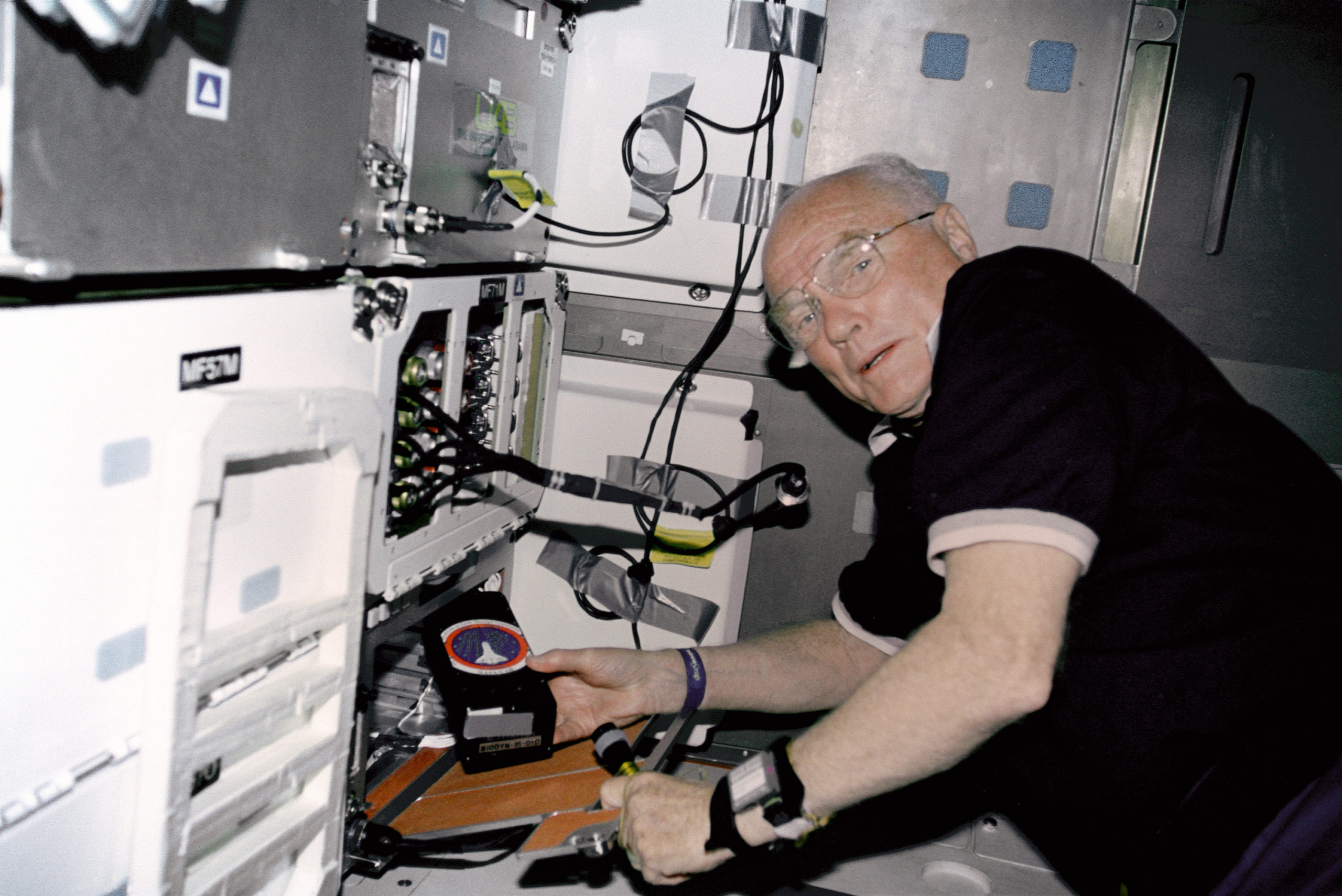With his passing earlier today, John Glenn is being remembered as not only the first American to orbit the Earth, but also the oldest. Here’s why NASA sent a 77-year-old man into space, and how his historic trip set space science forward.
Image: NASA/JPL
During the 1990s, when John Glenn was serving as a Senator for Ohio (and a member of the Senate Special Committee on Ageing), he lobbied NASA to fly again. The space agency agreed, training him and assigning him to mission STS-95 aboard the Space Shuttle Discovery.

The seven crew members in training for the STS-95 mission aboard Discovery. Pictured, from the left, are Pedro Duque, Curtis Brown, Chiaki Nauto-Mukai, then-US Sen John H. Glenn Jr (D.-Ohio), Stephen Robinson, Steven Lindsey and Scott Parazynski. (Image: NASA/JPL)
Glenn was listed as the mission’s Payload Specialist, but the real point of sending the 77-year-old veteran into space was to see how his aged body would fare in space, and how ageing might relate to deleterious effects of zero gravity on the human body.
The launch on 29 October 1998 got off to a rocky start. The countdown stopped at T-9 minutes, and it stood there for over eight minutes as the launch team discussed the status of an alarm heard during cabin leak checks after the hatch was closed. The countdown stopped yet again at the T-5 minute mark on account of an unauthorised aircraft flying in restricted air space near the Kennedy Space Center. The countdown resumed once the plane was gone, but after the main engine finally started, and just prior to the main booster ignition, a drag chute compartment door fell off. The launch team figured it didn’t pose any threat to the mission, and chose to proceed as planned.
When the shuttle reached low Earth orbit, Glenn returned to space exactly 36 years, eight months and nine days after he became the first American to do so.
The primary objectives of the mission included performing over 80 science experiments, conducting tests in the pressurised SPACEHAB module, retrieving the Spartan free-flyer payload, working with the Hubble Space Telescope and, of course, performing a battery of tests on Glenn.

STS-95 payload specialist John Glenn in a locker in the Discovery’s middeck. (Image: NASA/JPL)
The experiments on Glenn were focused at deepening our understanding of the ageing process. Even back in the ’90s, ageing experts noticed similarities between the effects of spaceflight on the human body and natural changes that occur as a person gets older.
For the duration of the mission, Glenn was basically turned into a lab rat. “For four days, I had 21 different leads — brainwaves and respiration and EKG — 21 different body parameters being recorded and sent down to the ground,” noted Glenn in 2011. With the help of mission specialist Pedro Duque, the crew conducted tests to see how the absence of gravity affected Glenn’s balance and perception, immune system response, bone and muscle density, metabolism, blood flow and sleep.
Thanks to these tests and subsequent space missions, we know that space is incredibly hard on the human body. It affects everything from muscle mass and bone density to heart health and vision, to name but a few issues.
When the Discovery made its re-entry through the Earth’s atmosphere nine days after launch, Glenn’s descent was discernibly smoother than it was decades before. Instead of the intense 7 G’s endured during the re-entry of Friendship 7, Glenn had to deal with “just” 3 G’s of force. During the course of the nine-day mission, Glenn orbited the Earth 134 times, travelling 5.7 million km in the process.
